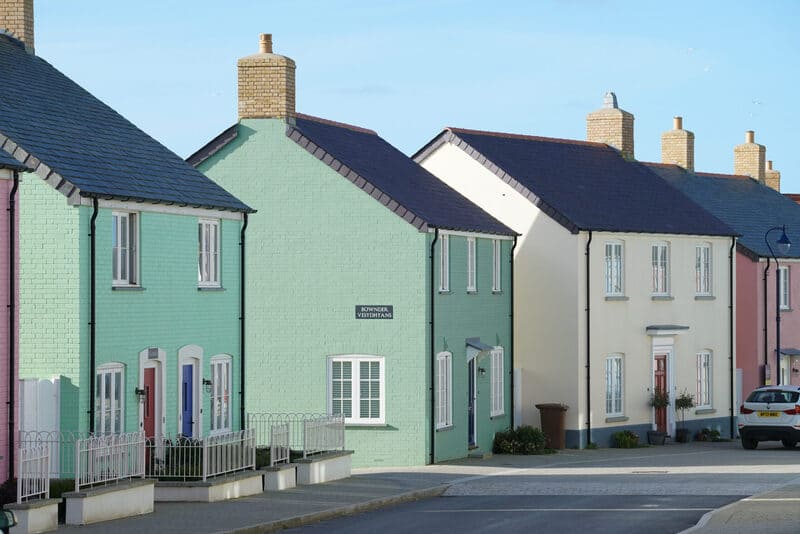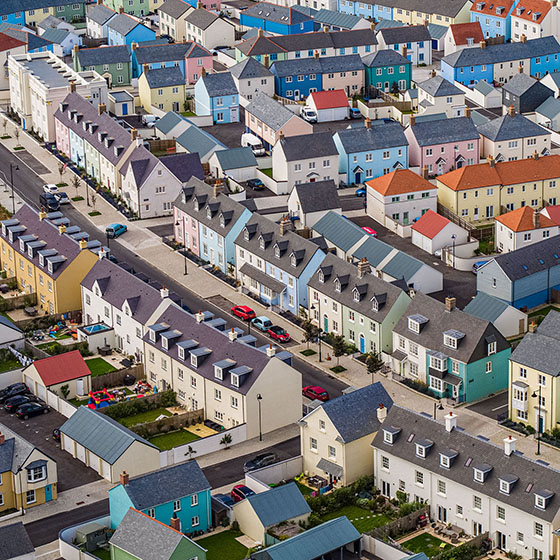Our Philosophy & Principles
Many modern built environments have promoted fragmentation and isolation by failing to put people at the heart of the design process. Nansledan differs because it has evolved from engagement and discussion with the local community to ensure it continues to deliver for the local community.
This guiding philosophy continues under HRH Prince William, who wishes to meet the needs of the local community and businesses in the homes that are built and jobs that are created.

Cornish place naming
Nansledan reflects the culture and heritage of Cornwall not just through its architecture, but also through its place names. Nansledan itself is Cornish for ‘broad valley’ and thanks to the help of the former Cornish Language Partnership, every street, lane, square and quarter in Nansledan has a Cornish name.
Ten principles of Nansledan
The evolution of Nansledan continues to be governed by 10 Principles of Development, which were first published in the Duchy of Cornwall’s Pattern Book for Newquay in 2005 and are set out below.

Public consultation
Any development will evolve through proactive public consultation and participation. This will contribute throughout so as to enable reviews.
Masterplan
A masterplan to integrate a mix of public spaces, street types and building types, based on public consultation, will be resolved and approved by the community before phase one is released for detailed design, planning and development.
Sustainability
The masterplan will address sustainability in its broadest sense and provide environmental, social and economic framework solutions.
Local identity
The development will reflect local identity. It will capture the spirit of Newquay’s urban fabric, yet not be afraid to re-interpret. The tool to achieve this will be the Newquay Pattern Book, which will be shaped by local consultation, and a Building Code. In tune with the masterplan, these documents will regulate the development.
Cornish resources
The use of local resources will be preferred so as to assist the local economy, reflect local identity and meet sustainability objectives.
Indigenous needs
The primary purpose of the development is to meet local needs. These needs are to be identified and understood through public consultation and enquiry and will be addressed in the masterplan. A sense of community will best be established by conceiving a development which responds to local needs and thereby is occupied by a resident population.
Relationship with Newquay
The new development will forge strong physical connections so as to strengthen the town and present social infrastructure. However, as a genuinely mixed-use sustainable development, it will be able to meet daily needs. It will be distinctive as a place, but evocative and closely related in appearance to the wider town.
Environmental impact assessment
All development impacts upon the environment. That impact will be measured so as to inform the masterplan and the design. The aim will be to minimise or mitigate the impact and where possible to procure enduring benefits.
Efficient land use
As a diminishing resource, land must not be wasted. The development will be fit for the future and capable of adaptation to meet changing needs. It will be urban in form and confident about density and height. Public spaces will be tightly enclosed and a new urban edge will be defined but the development need not necessarily be finite.
Viability
The development will have commercial integrity and as part of its sustainable ambitions seek to provide an economic microclimate that occupies and helps retain its community in good heart for the long term.